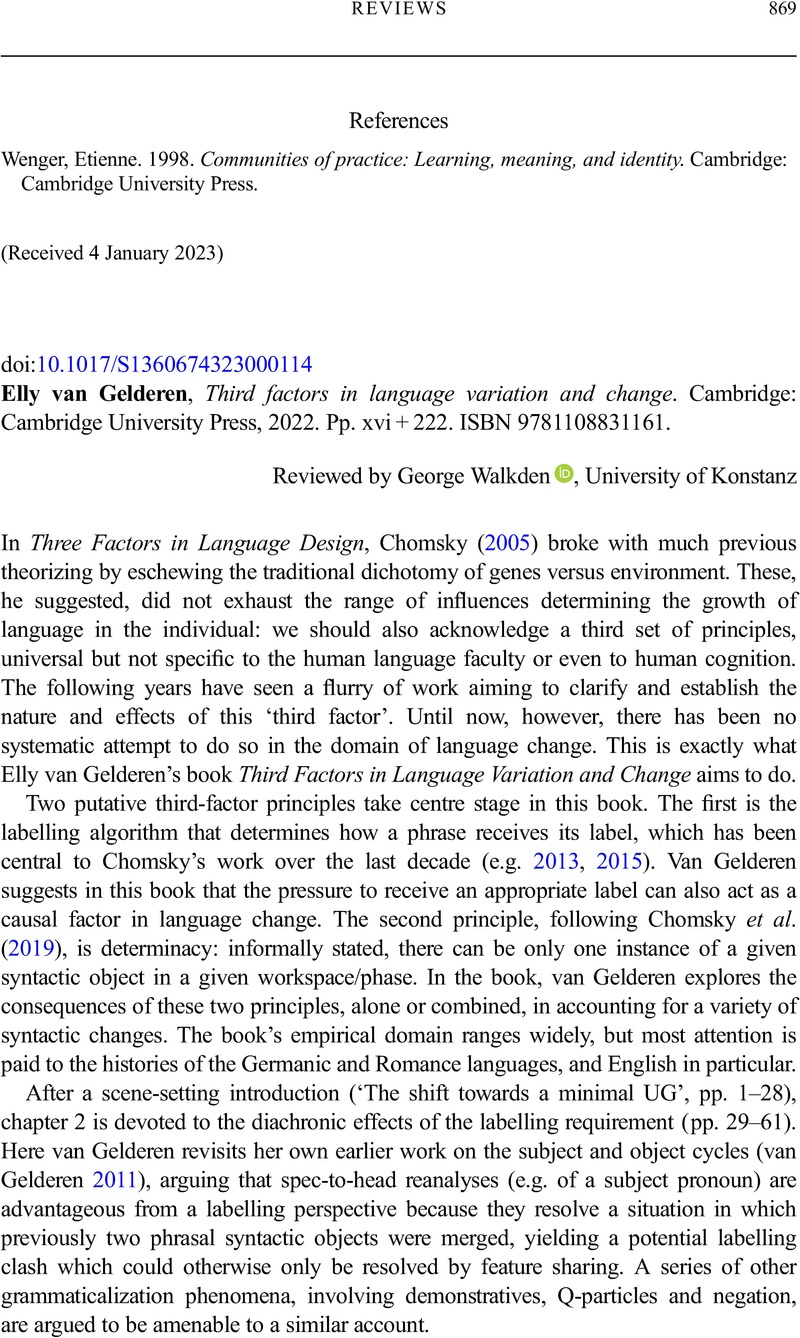No CrossRef data available.
Article contents
Elly van Gelderen, Third factors in language variation and change. Cambridge: Cambridge University Press, 2022. Pp. xvi + 222. ISBN 9781108831161.
Review products
Elly van Gelderen, Third factors in language variation and change. Cambridge: Cambridge University Press, 2022. Pp. xvi + 222. ISBN 9781108831161.
Published online by Cambridge University Press: 12 April 2023
Abstract
An abstract is not available for this content so a preview has been provided. Please use the Get access link above for information on how to access this content.

- Type
- Book Review
- Information
- Copyright
- Copyright © The Author(s), 2023. Published by Cambridge University Press
References
Booth, Hannah M. 2018. Expletives and clause structure: Syntactic change in Icelandic. PhD dissertation, The University of Manchester.Google Scholar
Chomsky, Noam. 2005. Three factors in language design. Linguistic Inquiry 36(1), 1–22.CrossRefGoogle Scholar
Chomsky, Noam. 2015. Problems of projection: Extensions. In Di, Elisa Domenico, Cornelia Hamann & Matteini, Simona (eds.), Structures, strategies and beyond: Studies in honour of Adriana Belletti, 3–16. Amsterdam: John Benjamins.Google Scholar
Chomsky, Noam, Gallego, Ángel J. & Ott, Dennis. 2019. Generative grammar and the faculty of language: Insights, questions and challenges. Catalan Journal of Linguistics, 229–61. https://doi.org/10.5565/rev/catjl.288CrossRefGoogle Scholar
Eitler, Tamás. 2006. Some sociolectal, dialectal and communicative aspects of word order variation in late Middle English. PhD dissertation, Eötvös Loránd University.CrossRefGoogle Scholar
Gelderen, Elly van. 2011. The linguistic cycle: Language change and the language faculty. Oxford: Oxford University Press.CrossRefGoogle Scholar
Light, Caitlin. 2015. Expletive there in West Germanic. In Biberauer, Theresa & Walkden, George (eds.), Syntax over time: Lexical, morphological and information-structural interactions, 17–35. Oxford: Oxford University Press.CrossRefGoogle Scholar
Roberts, Ian G. 2021. Diachronic syntax, 2nd edition. Oxford: Oxford University Press.Google Scholar
Vikner, Sten. 1995. Verb movement and expletive subjects in the Germanic languages. Oxford: Oxford University Press.CrossRefGoogle Scholar



